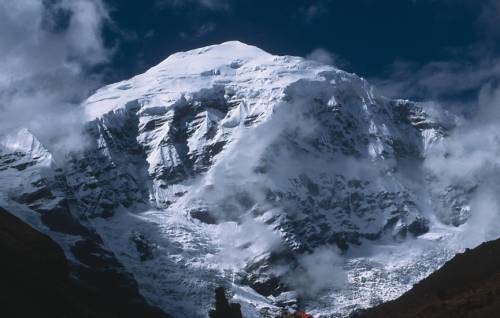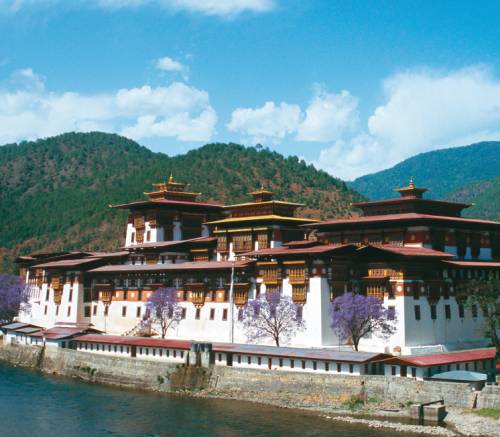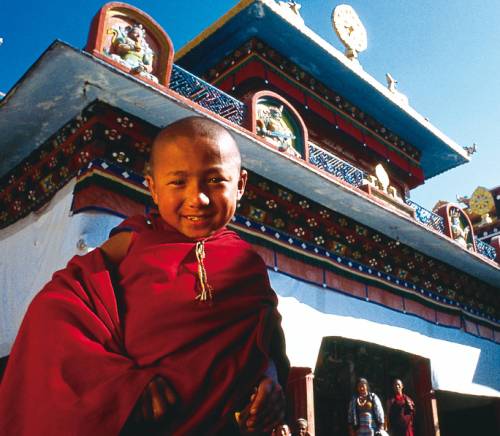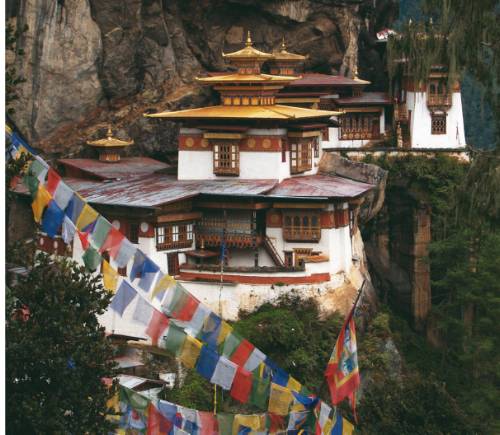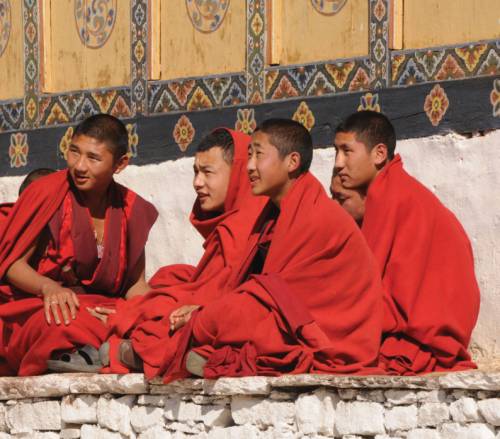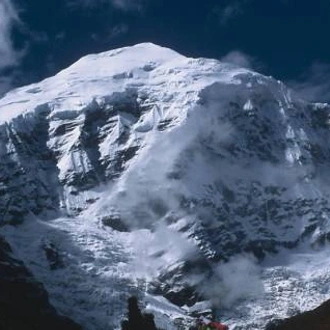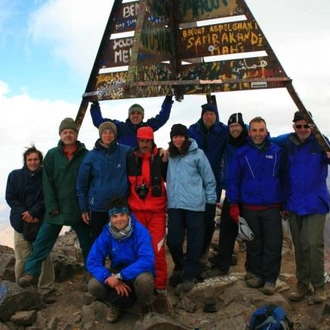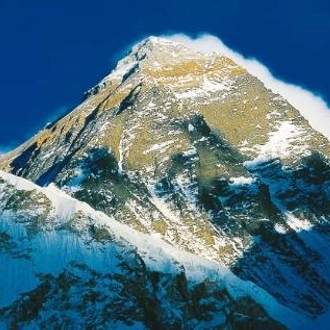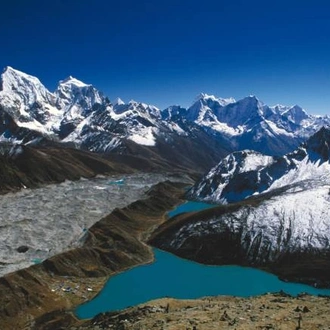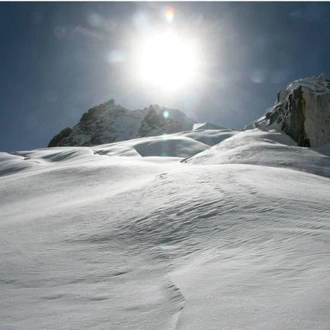Bhutan High Trails via Laya
Bhutan High Trails via Laya
This tour is no longer available, here are some similar tours:
Tour Overview
Embark on an unforgettable journey through the mystical landscapes of Bhutan with the "Bhutan High Trails via Laya" tour. This adventure offers breathtaking views of the sacred peaks Jomolhari and Jichu Drake, as you trek through pristine wilderness and over high mountain passes. Experience the remote settlement of Laya, home to the indigenous Layap people, and gain insight into Buddhist culture with a visit to the iconic Tiger's Nest Monastery. Explore the ancient dzongs and vibrant marketplaces of Thimphu and Paro, immersing yourself in the rich cultural tapestry of Bhutan. With expert guides, quality accommodations, and all necessary equipment provided, this tour ensures a seamless and enriching experience. Enjoy 17 days of fully catered meals, airport transfers, and the use of a World Expeditions trek pack, making this a truly all-inclusive adventure. Discover the untouched beauty and spiritual heritage of Bhutan on this remarkable trekking expedition. ...more ...less
Highlights
Itinerary
Day 1 : Join Paro (2200m)
Location: Paro
Accommodation Name: Hotel
Meals Included: Breakfast, Lunch, Dinner
After clearing customs and immigration you will meet your Bhutanese leader and drive a short distance via the main street of Paro to our accommodation. At some stage of our visit, we have planned visits to the main part of town, and a visit to the National Museum. It will depend on our time of arrival into Paro, and when trek preparations are completed.
The touring program will take in the grand Paro Dzong which dominates the valley and is the most important Dzong (fortress) in Bhutan. It is the model by which all other dzongs are constructed. The watchtower above it, Ta Dzong, is also an impressive building that houses the National Museum that is very informative. Old costumes and battle dress, together with priceless jewellery and specimens of the kingdom's unique flora and fauna are included within the museum. Downtown, there is a mixed collection of shops selling basic goods, and also handicrafts of wood, cloth and metalware. Archery is the national sport and practised throughout the kingdom. Shooting ranges lined by willow trees can be seen during our travels, as well as some traditional style bridges.
Overnight Hotel. ...more ...less
Day 2 : Paro Valley, Taktsang Monastery (3100m) & National Museum
Location: Paro Valley
Meals Included: Breakfast, Lunch, Dinner
Today is a really exciting and informative day as an introduction to this wonderful country. The Paro Valley is truly beautiful, being a location for various farming activities, including commercial quantities of asparagus, strawberries and shitake mushrooms for export, plus various grain and vegetable crops. It is a patchwork of colours delineated by well kept traditional design farm houses that are ornately decorated. All of the slopes surrounding the valley are forested and the hint of mountains beyond is alluring. Our morning is spent exploring and appreciating the Tigers Nest Monastery or Taktsang, as it is known in Bhutan, a short drive from our resort. It takes us about one and a half hours to walk up the winding trail steeply through chir pine forest to a tea house and excellent vantage point. Another half hour walk takes us almost directly opposite the cliffs where the monastery is set. The monastery is the divine resting place of the Guru Ringpoche, and although it was once accidentally burnt down it has now been restored to its former glory. We return back to our accommodation for lunch and then some touring in the afternoon. This evening you will need to repack, leaving behind things you will not require on the trek for safe storage with our local partner.Overnight Hotel.
Day 3 : Drive past Drukyel Dzong (2580m) to Shana (2860m) and commence trek to Thongo Zampa (3250m), (11kms, approx 4 hrs)
Location: Paro
Accommodation Name: Camp Thongo Zampa
Meals Included: Breakfast, Lunch, Dinner
It is a short drive of approx 20 minutes up the Paro valley to Drukyel Dzong, which was originally built as a fortress in 1647 to guard against Tibetans invading the Paro Valley. We continue the drive to Shana (1-1.5h drive) from where our trek commences. On this scenic drive we pass through farm country made up of fields of rice, wheat, barley, mustard, potato, and radish as well as herds of cows. The traditional Bhutanese two storey, timber and stone houses can be seen here. We also gain our first views of the summit of Jomolhari (7314m) at the head of the valley. We get under way and take a break for lunch where it suits us, as we are carrying a packed lunch. Initially the trail is wide and flat, as it meanders steadily through lightly forested fields, which in recent years have been the site of the ongoing large-scale Bhutan Government project to bring electricity to the isolated villages further up the valley.
Overnight camp Thongo Zampa.
Day 4 : Trek to Soi Thangthangkha (3700m) (approx 4 hrs)
Location: Jigme Dorji National Park
Meals Included: Breakfast, Lunch, Dinner
We are now trekking within Jigme Dorje National Park, the largest protected area in the country (4350 sq kms.) which extends beyond Laya to Lunana in the east and all the territory to the south. Whilst it is a protected wilderness, the park management which is based at Gasa, has to cope with the needs of lowland farmers and semi-nomadic yak herders. There is an amazing variety of species of plants and animals in the park at both high and low altitudes. The forests are tall and thick, comprising a variety of oaks, maple, birch, larch pine and alders that will be replaced by more and more rhododendron and pines as we trek higher. There are numerous different varieties of the former, and depending on the onset of warmer temperatures after winter, flowers will be in bloom, or past bloom, as the lower altitudes flower earliest. As we climb higher the rhododendron species change from the common rhododendron arboreum (Nepal's national flower) to griffithianum and cinnabarinum. Many of the camps we stop at are not settlements as might be implied by them having a place name. Most are merely clearings beside a water source, which are also suitable camping sites for seasonal yak herders and workers who are involved in the large scale electrification project that will bring electricity to this region of Bhutan. Some of the camp sites with nearby settlements provide an opportunity to recharge your camera batteries and phones, with a minimal fees at times. Overnight Camp.
Day 5 : Trek to Jangothang (4100m) (12kms, approx 5 hours)
Location: Jangothang
Meals Included: Breakfast, Lunch, Dinner
We continue higher to the camp at the base of Jomolhari, a superb alpine setting. Jichu Drake (6794m) rises to our right, with a fine, elegant ridge running down toward the pass that we will cross on our next trekking day. We camp in the vicinity of yak herders from the Paro Valley, who, like their counterparts in Southern Tibet, live in woven yak wool tents throughout the summer months. By now we are above the treeline and the area is characterised by low tundra of juniper and rhododendron setosum, while blue sheep have also been spotted in the higher rocky outcrops.Overnight Camp.
Day 6 : At Jangothang (acclimatisation day)
Location: Jangothang
Meals Included: Breakfast, Lunch, Dinner
Today we are at Jangothang, an important day for acclimatisation. A side trip up the small valley towards Jomolhari takes us to a dramatic viewpoint towards the glacier beneath. Alternatively we may make a scenic excursion up to Sopu Lake set adjacent to Nye La pass, both will be worthy photo excursions. As far as mountaineering is concerned, these two peaks, like the rest of Bhutan, have seen little expedition activity from outsiders. Doug Scott successfully climbed Jichu Drake in 1988 on his third attempt, demonstrating that conditions are not so easy on this far east location of the Himalaya, being first in line geographically for monsoonal influences.Overnight Camp.
Day 7 : Cross Nyile La (4890m) to Lingshi Village (~15kms, approx 7 hrs)
Location: Lingshi
Accommodation Name: Camp Chazhithang
Meals Included: Breakfast, Lunch, Dinner
From camp we commence our ascent over rolling slopes of grassland and small brush to the Nyile La (4850 metres). This is a relatively long day on the trail, so if this is your first Himalayan pass just take your time, particularly on the final steeper stages just below the pass, where grasses give way to scree and sand. The electrification project was a hard work on this pass where all the poles were carried by the local people. From the Nyile La we leave Jomolhari and Jichu Drake behind and make a steep descent through dwarf rhododendron shrub towards Lingshi village. In the distance we can soon see the Lingshi Dzong, built to protect this and the other outlying villages of Bhutan from the periodic raids from Tibet. Before we reach the village and the Dzong, we turn off descending to cross a stream, there is a short stiff climb and then a descent into the quiet valley and the camp of Chazhithang by a stream. Overnight Camp.
Day 8 : Trek to Chebisa (3880m) village (14kms, approx 5/6 hrs)
Location: Chebisa
Meals Included: Breakfast, Lunch, Dinner
While those trekking just to the base of Jomolhari head out towards the roadhead today, we continue to head northeastward, ascending past the Lingshi Dzong across high alpine pastures dotted with rhododendron and daphne to Chebisa. It is a picturesque valley of pastures and shingle roofed, stone houses. At its head, a short stroll from camp, is a tall waterfall cascading from a gap in rocky cliffs with a hanging lake behind. Beneath are stands of very tall, gnarled juniper trees. Our camp is next to the village so you will hear a lot of yak herder Tibetan mastiff and mixed breeds bark at night. These dogs guard the yaks and cattle from predators. Earplugs are recommended. Above Chebisa are the alpine pastures of the blue sheep and bharal that graze to the margins of the snowmelt during the summer months and descend way below the villages during the winter.Overnight Camp.
Day 9 : Cross Gombu La (4440m) to Shomuthang (4221m) camp (16kms, approx 7/8 hrs)
Location: Gombu La
Accommodation Name: Camp Shomuthang
Meals Included: Breakfast, Lunch, Dinner
From Chebisa the trail gradually ascends to the Gombu La (4440 metres). The views back to Lingshi and the surrounding peaks are spectacular. Here, hill partridges have been sighted, while the griffons may be seen soaring above the alpine pastures. The descent to our camp beside the farm village at Shomuthang is through a forest of cypress then spruce and birch with large stands of rhododendron - griffithianum and campylocarpum. Iris and edelweiss may also be in flower. Our camp is set right beside the river in a small clearing surrounded by dense bushes.Overnight Camp.
Day 10 : Cross Jare La (4785m) to Robluthang (4165m) (18kms, approx 8/9 hrs)
Location: Jare La
Accommodation Name: Camp Robluthang
Meals Included: Breakfast, Lunch, Dinner
Our route takes us directly upwards this morning, traversing around many grassy slopes to the Jare La. Blue sheep and griffons can often be seen here. Once at the gap, marked by flags and several cairns we can look expansively across to the adjacent valley and our next pass, the Shinge La. This pass is the highest and perhaps the hardest of our trek. The trail winds down through rhododendron, spruce, cypress and birch towards a broad valley floor where animals may be seen grazing. This may well be our first encounter with the people of Laya whom differentiate themselves by wearing the distinctive woven conical hats with a spike in the top and colourful beads draped around the back. Their 'mobile accommodation' as with all high altitude animal herders in this part of the world, is in heavy woven tents, usually made from yak wool. We trek several hundred metres in height up the opposite side of the valley to our camp in a hollow at Robluthang.Overnight Camp.
Day 11 : Cross Shinche La (5005m) to Lemithang (4150m) (16kms, approx 8/9 hrs)
Location: Shinche La
Accommodation Name: Riverside Camp
Meals Included: Breakfast, Lunch, Dinner
It will take us approximately four hours to make our ascent of Sinche La. A slow steady pace is essential to gain it comfortably and make the long descent on the other side. At the pass itself there are glimpses of peaks to our left including Gangchenta. Descending, through boulders and grassy slopes, unparalleled views open out before us. Glacial blue lakes and white ribbon streams are set beneath the dramatic peaks of the 'Tigers Ears' Gangchenta. Further down, classic glacial erosion is at work, with fresh lateral and terminal moraine filling the valley floor along with an enormous milky grey lake. The forests are thick here, and our lovely riverside camp is surrounded by very tall conifers and the Tigers Ears as our backdrop.Overnight Camp.
Day 12 : Trek to Laya village (3800m) (13kms, approx 5/6 hrs)
Location: Laya
Meals Included: Breakfast, Lunch, Dinner
This morning we walk directly away from the mountain environment before us, descending the valley to Laya and our first principle village of the trek. The forests are thick for the several hours; and the trail winds down beside the river steeply, until we reach pastures of the farmers of outer Laya. A swing in the trail brings us up to the main settlement which is spread out over a broad spur several hundred metres above the Mo Chu River. There are approximately 800 inhabitants in this high set village, and there is a school, hospital several small shops and a gompa to meet their needs. Life is not easy in this cooler, isolated location that is snowed in, in winter. Much of their living is reliant on yaks (meat, wool and dried cheese) and one annual crop of barley, mustard and turnips. Beneath the village is an army post protecting the frontier with Tibet, whilst above us to the east are spectacular views ahead to Masang Gang (7194m) and the region of Lunana where the 'Snowman' trek passes.Overnight Camp.
Day 13 : Rest day at Laya, explore local area
Location: Laya
Meals Included: Breakfast, Lunch, Dinner
A day set aside to relax and rejuvenate after the exertions of the past few days. After a leisurely start to the day, we will enjoy some additional visiting time in Laya, threshing wheat with the locals, visiting the school or perhaps enjoying a soda in one of the small shops. Depending on logistics, we will either spend the night in Laya or descend down to the forested spur out of the village to the Mo Chuu River and camp at an army post that guards the frontier with Tibet.Overnight Camp.
Day 14 : Trek from Laya via Tongchudra to Taktsimakha, drive to Gasa (trek approx. 2-3 hours, drive approx. 2 hrs)
Location: Punakha
Meals Included: Breakfast, Lunch, Dinner
Initially our route takes a broad trail down, fairly steeply, through tall conifers to the river and army post. It then follows the course of the Mo Chu to the roadhead. The Mo Chu is a major Himalayan river that flows on through Punakha and then directly south to form the border between Assam and West Bengal, on into the Brahmaputra/Ganges and into the Bay of Bengal. The trail undulates down through beautiful forest of spruce, larch, birch, maple and rhododendron (sanguineum, cinnabarinum and arboreum). Be prepared for plenty of mud underfoot; these black fertile soils receive regular traffic of horse trains laden with goods/supplies travelling between Laya and the roadhead. Impressive waterfalls cascading over large boulders add yet another beautiful scenic dimension to our last day on trek. At Taktsimakha, our waiting vehicle will transport us to Gasa village (2850m), which serves as the local administrative and monastic center. The village is home to an impressive Dzong that historically guarded the trade route to Tibet. Below the village, we’ll visit the renowned Gasa hot springs, where we can relax our aching joints and celebrate the completion of our trek. Overnight Camp.
Day 15 : Drive to Punakha (drive approx. 2-3 hrs)
Location: Gasa
Accommodation Name: Camp Gasa
Meals Included: Breakfast, Lunch, Dinner
This morning we drive to the rich fertile valley of Punakha. The drive is around 2-3 hrs passing by the various villages and settlements on the way. The drive is beautiful through idyllic countryside past agricultural fields and sub tropical forest with waterfalls on the way. Once in Punakha, we visit the local bazaar before our excursion to the Punakha Dzong with its 21 temples, administrative buildings and Assembly Hall. It remains the winter residence of the ‘Je Khenpo’ - the head monk of the Drukpa sect - the Tibetan Buddhist sect that constitutes the official religious school of Bhutan. We can enjoy a short hike to visit Chimi Lhakhang, a small temple dedicated to one of Bhutan’s favorite saints, the “divine mad monk” Drukpa Kinley. This region was the stomping ground (nearly 500 years ago) of this rather unconventional character, who taught Buddhist dharma by employing an often shockingly ribald sense of humour.Overnight Hotel.
Day 16 : Drive to Thimphu via Dochula (drive approx. 2-3 hrs)
Location: Punakha
Meals Included: Breakfast, Lunch, Dinner
Today, we drive to Thimphu, the capital of Bhutan and home to around 150,000 people. Thimphu is a vibrant city where individuals from all corners of Bhutan have settled. Our journey takes us over the Dochu La Pass, where we will pause to admire the 108 stupas, built by the Queen Mother. At a scenic vantage point, we will hoist individual prayer flags for good luck. Upon arriving in Thimphu, our first stop is the Memorial Chorten, built in 1974 by the Royal Grandmother, Ashi Phuntsho Choden, in memory of the 3rd King, Jigme Dorji Wangchuck, who passed away in 1972. This revered site attracts Bhutanese from all walks of life, who circumambulate the stupa seeking merit and blessings. Following our visit, we will visit an atmospheric Bhutanese restaurant for lunch and check in to the hotel. After lunch, we continue our sightseeing with a visit to a viewpoint overlooking Thimphu, offering a stunning panoramic view of the city and we visit Buddha Point, home to the Buddha Dordenma, an enormous statue standing 169 feet (51.5 meters) tall. It is set amidst the ruins of Kuensel Phodrang, the former palace of Sherab Wangchuck, the 13th Desi Druk, and overlooks the southern approach to Thimphu. Depending on available time, we may also explore the Textile Museum, showcasing Bhutan’s rich weaving traditions, the Farmers’ Market, a vibrant market offering local produce and handicrafts, the Post Office - Bhutan's exquisite stamps are world-renowned, or a mill demonstrating Bhutan’s traditional paper-making process.Overnight Hotel.
Day 17 : Drive to Paro (approx 1-2hrs driving)
Location: Paro
Accommodation Name: Hotel
Meals Included: Breakfast, Lunch, Dinner
Today, we conclude our sightseeing in Thimphu, including an archery contest, offering a glimpse into Bhutan’s national sport, before setting out toward Paro. Upon arrival, we visit Dungtse Lhakhang, one of the sacred temples built across Tibet and Bhutan by Tibetan King Songtsen Gampo. This temple signifies the introduction of Buddhism in Bhutan, and its ancient murals remain well-preserved, offering a fascinating insight into Bhutanese religious art. You will have some free time to shop for any last-minute gifts and souvenirs at the markets in Paro. Later, you will enjoy a farewell dinner with your guide and driver, marking the end of this unforgettable journey to Bhutan, the Land of Happiness.Overnight Hotel.
Day 18 : In Paro, trip concludes
Location: Paro
Meals Included: Breakfast
The trip concludes after breakfast with a transfer to the airport.
What's Included
-
Accommodation
4 nights hotel -
17 breakfasts, 17 lunches and 17 dinners
-
airport transfers on Day 1 and Day 18
-
expert bilingual guide
-
Safety equipment including portable altitude chamber, group medical and satellite phone for emergency use
-
good quality accommodation in Paro and Thimphu
-
the use of a World Expeditions trek pack which includes a quality sleeping bag, down or fibre fill jacket and insulated mat (valued at over US$500)
-
all group camping equipment
-
private transportation
-
all park entrance fees and trekking permits
-
animals to carry 20kgs personal equipment
What's Not Included
-
International flights
International flights are not included in the tour package.
-
Bottled water
Bottled water is not included in the tour package.
-
Aerated and alcoholic drinks
Aerated and alcoholic drinks are not included in the tour package.
-
Items of a personal nature
Items of a personal nature such as phone calls and laundry are not included.
-
Tips
Tips are not included in the tour package.
-
Airport & departure taxes
Airport and departure taxes are not included in the tour package.
-
Travel insurance
Travel insurance is not included and is recommended to be arranged separately.
What You Carry
In your daypack you will need to carry extra warm clothing (depending on the altitude, location and weather), two water bottles, camera, and personal items such as sunscreen, etc. Porters and mules carry all group gear and your trek pack.
Grading
These adventures involve trekking, cycling or rafting in remote areas in variable weather conditions for up to 8 to 10 hours a day (possibly more subject to weather conditions and altitude). This may include spending successive days at altitudes not generally exceeding 6000m. These trips may often be over three weeks in duration. You will need an excellent level of fitness, be prepared to carry a daypack weighing up to 8kgs (and in some cases a full pack) and be completely comfortable in adverse weather conditions.
* Suggested preparation: One hour of aerobic type exercise, four to five times a week for three to six months prior to departure. Hill walking with a pack in variable weather conditions or on/off road cycling is also recommended.
...more ...less
Mode of Transport
Private transportation is provided throughout the tour, including airport transfers and scenic drives between destinations, ensuring a seamless travel experience.
Accommodation
Enjoy good quality accommodation in Paro, with camping facilities provided during the trek, ensuring a comfortable stay amidst the stunning landscapes of Bhutan.
Check out our Q&As
-
What kind of meals are provided during the tour?
The tour includes 17 breakfasts, 17 lunches, and 17 dinners.
-
Is there any special equipment provided for the trek?
Yes, a World Expeditions trek pack is provided, which includes a quality sleeping bag, down or fibre fill jacket, and insulated mat.
-
What safety measures are in place during the trek?
Safety equipment including a portable altitude chamber, group medical supplies, and a satellite phone for emergency use are provided.
-
Are there any cultural experiences included in the tour?
Yes, the tour includes visits to the Tiger's Nest Monastery, ancient dzongs, and market places in Thimphu and Paro, providing insights into Bhutanese culture.
-
What is the luggage arrangement during the trek?
Animals are used to carry up to 20kgs of personal equipment for each participant.
-
Is there any acclimatization day included in the itinerary?
Yes, there is an acclimatization day at Jangothang to help participants adjust to the altitude.
-
What kind of accommodation is provided in Paro?
Good quality accommodation is provided in Paro.
-
Are airport transfers included in the tour package?
Yes, airport transfers are included on Day 1 and Day 18 of the tour.
-
Is there a guide provided during the tour?
Yes, an expert bilingual guide is provided throughout the tour.
-
Who will be my travelling companions on the tour?
We have offices on three continents which means your travelling companions will be just that – international and wonderfully eclectic. Part of small group travel means that although travellers come from various locations and backgrounds, you will be travelling with like-minded companions who, like you, are keen to share the experience and forge lifelong friendships.
-
What about environmental impact?
We believe that adventure travel revolves around establishing a strong relationship with the people and environments in which we operate. Our responsible travel policies have been carefully developed to ensure that we minimise the impact of our presence and help to protect the regions we visit while contributing positively to the local community.
-
What should I pack?
Your pre-departure documents include a detailed packing list with items that you need to bring. While most of the equipment for daily activities is included in your tour cost, some items like helmets and hiking boots are best brought from home. The pre-departure documents also include information on layering and recommended brands for various items to ensure you are fully prepared for your trip.
-
Do you operate a “single share” option and how does it work?
Yes. World Expeditions does not require single travellers to pay a surcharge for travelling alone on the vast majority of our trips. Our holidays are primarily on a twin share basis, so if you are joining the group as a solo traveller, we will match you with someone of your own gender. The choice is yours however; if you prefer not to share, we do offer single supplements for private occupancy.
-
Are tips included in my trip price?
Tips are not included in the tour cost. Tipping is a personal thing, do not worry about how much, or when, to tip. Tipping guidelines are provided for certain destinations in our pre departure information upon booking, however the best advice will be provided by your tour leader.
-
Am I suited to small-group travel?
We recognise that many of our travellers have not been on a ‘group trip’ before. Yet what our departures provide is both structure and flexibility, allowing you plenty of freedom within the framework of the itinerary. You’ll find that with our maximum group size at 16, you’ll travel in a minimal impact style with a great group of like-minded travellers.
-
Can you advise which vaccinations are recommended?
While our pre-departure kit provides information on vaccinations, we suggest that you consult your doctor, local government inoculation centre or a travel medical specialist in order to get the most current advice regarding vaccination requirements.
Reviews from travellers on this tour
Book with Confidence
-
Transfer as credit to Future Tours
World Expeditions allows you to transfer existing payments to a future tour to avoid cancellation fees if you can't travel and inform world expeditions, 70 days before departure.
-
Low Deposit
World Expeditions requires a minimum deposit of 400 GBP per person or the full booking value, whichever is less, with the final balance not due until 70 days before departure.
-
Cancellation Policy
We don't charge a cancellation fee, here is a summary of world expeditions charges.
Up to 70 days before tour starts: Forfeit 100% of deposit.
At 69 days before tour starts: Forfeit 50% of booking price.
At 35 days before tour starts: Forfeit 100% of booking price.
Bhutan High Trails via Laya
18 Days Starting and ending in Paro, Bhutan
Visiting: Paro, Paro Valley, Jigme Dorji National Park, Jangothang, Lingshi, Chebisa, Gombu La, Jare La, Shinche La, Laya, Punakha, Gasa ...more ...less
Tour operator:
Tour code:
BHT
Guide Type:
Fully Guided
Group size:
4 - 16
